Birds: Journals & Articles
Further resources, if available, can be found in our full bibliography.
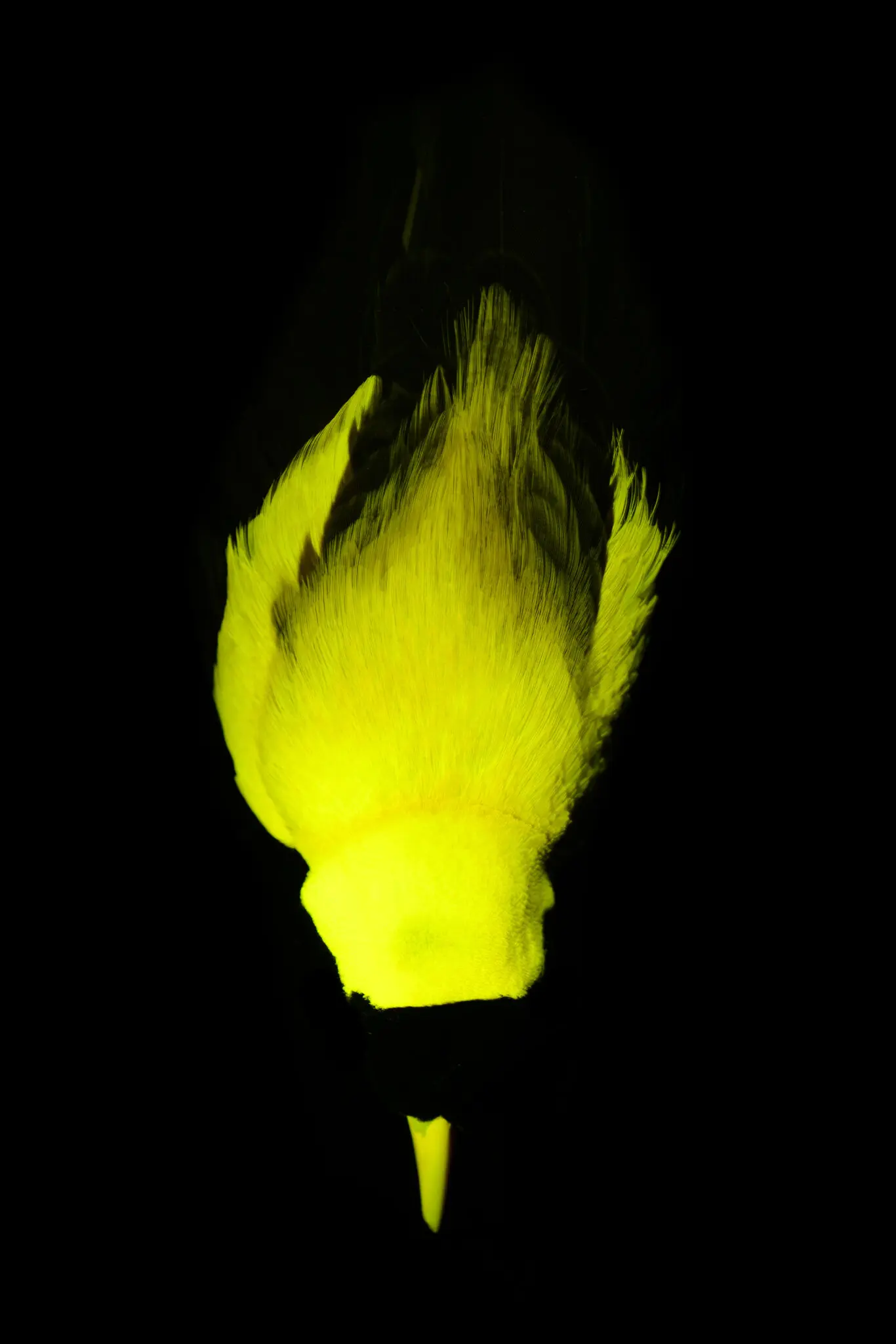
Scientists studying birds-of-paradise at the American Museum of Natural History discovered that these birds exhibit photoluminescence, a phenomenon where they absorb UV light and re-emit it as visible light, often in green or yellow hues. This biofluorescence, previously found in other species like fish and mammals, had not been identified in birds until now. The study, published in Royal Society Open Science, suggests this visual effect may play a role in their elaborate mating displays.
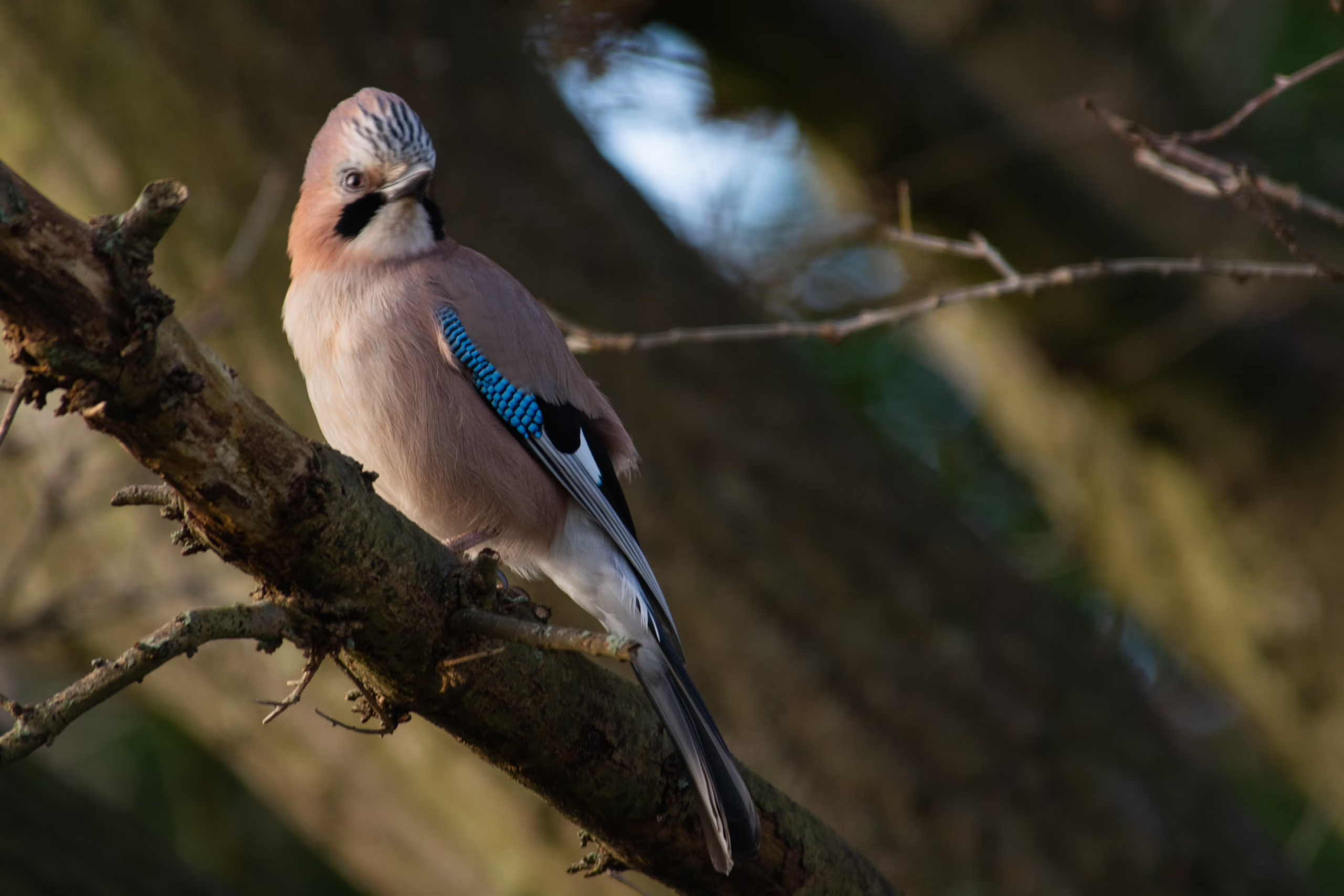
"Mirror Stimulation in Eurasian Jays (Garrulus glandarius)"
Luigi Baciadonna, Francesca Cornero, Nicola Clayton, Nathan Emery
Mirror exposure elicits a wide range of behavioral responses, some of which have been considered as part of possible evidence of mirror self-recognition (MSR). These responses can range from social behaviors, indicating that an animal considers its own reflection as a conspecific, to mirror-guided and self-directed actions. Evidence of MSR has been found categorically in only a few species, such as in magpies, chimpanzees, horses, and elephants. Evidence in corvids is currently debated due to inconsistent findings. In this study, the authors investigated the reaction of Eurasian jays when presenting them with three mirror-stimulation tasks. Based on the overall behavioral patterns across these three tasks, conclusions about birds’ understanding of a reflective surface, and their perception of the reflection as either themselves or as a conspecific, appear premature. They highlight how the high neophobia of corvids and other methodological constraints might have hindered the likelihood to approach and explore a mirror, preventing the emergence of behaviors typically associated with MSR. Furthermore, the authors discuss how motivational factors, methodological constraints and species differences should be considered when interpreting behavioral responses to mirrors.
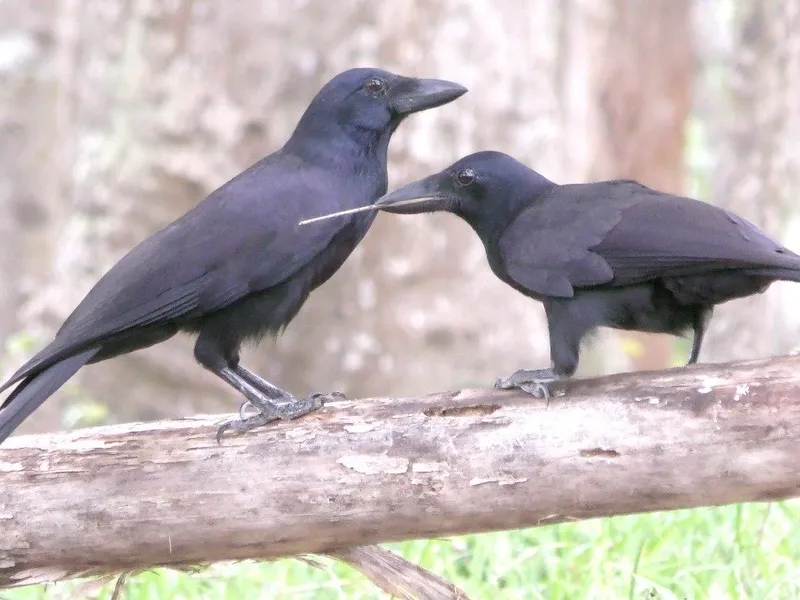
"Like Humans, These Big-Brained Birds May Owe Their Smarts to Long Childhoods"
Amanda Heidt
In this Science article, Heidt summarizes a new study by Natalie Uomini and her team on the evolutionary cognition of corvid birds, which was published in the journal, Philosophical Transactions B. Uomini argues that extended juvenile learning periods and parenting time frames may be linked to the evolution of larger brains and intelligence in corvids. Heidt describes how the new study may reveal insights into the link between parental care and intelligence in birds.
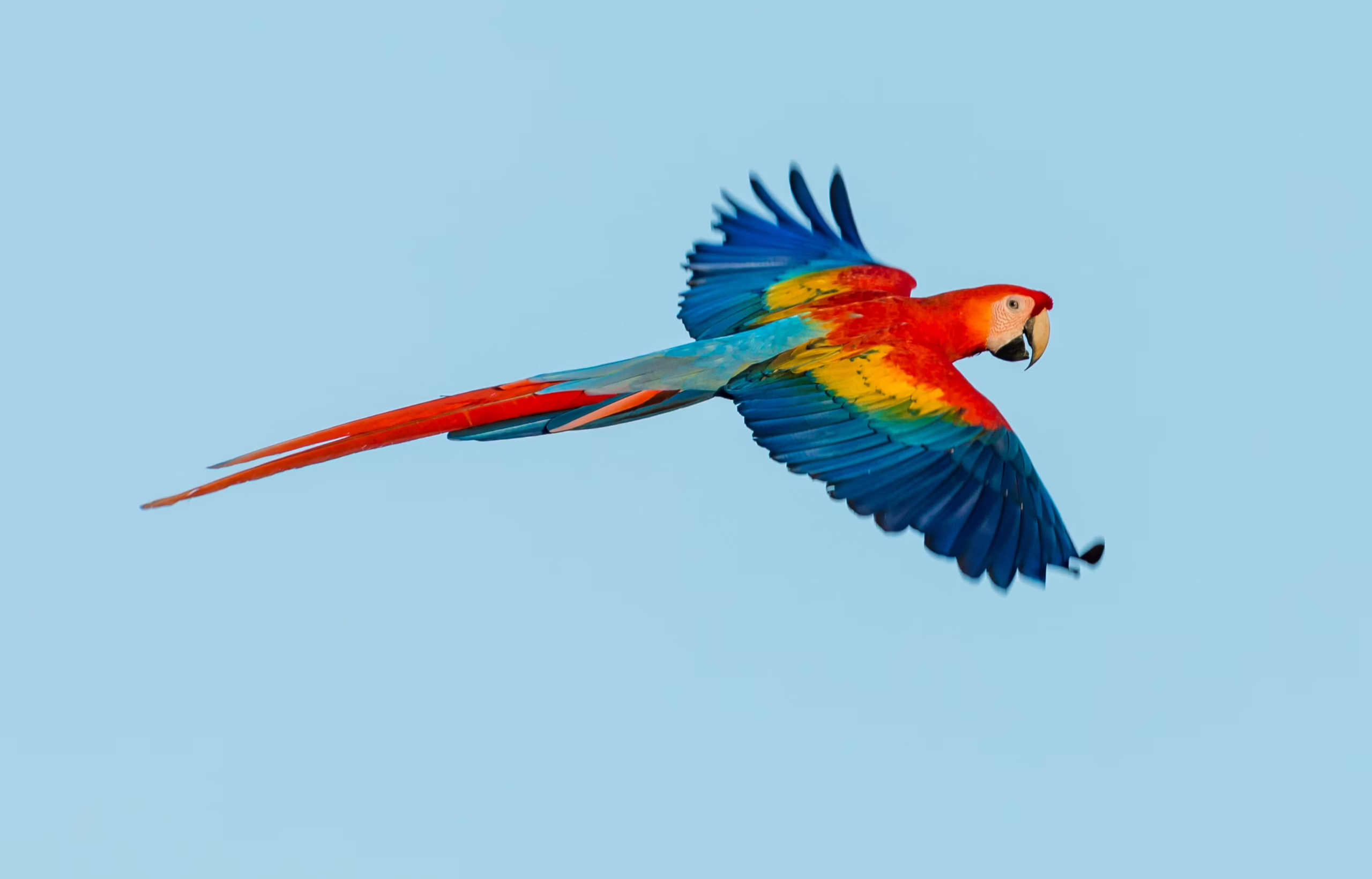
"Vertical Transmission of Learned Signatures in a Wild Parrot"
Karl S. Berg, Soraya Delgado, Kathryn A. Cortopassi, Steven R. Beissinger, Jack W. Bradbury
In presumably all of the 350+ parrot species, individuals of both sexes commonly learn vocal signals throughout life to satisfy a wide variety of social functions. Despite intriguing parallels with humans, there have been no experimental studies demonstrating learned vocal production in wild parrots. Berg et al. studied contact call learning in video-rigged nests of a well-known marked population of green-rumped parrotlets (Forpus passerinus) in Venezuela. Both sexes of naive nestlings developed individually unique contact calls in the nest, and the researchers demonstrate experimentally that signature attributes are learned from both primary care-givers. This represents the first experimental evidence for the mechanisms underlying the transmission of a socially acquired trait in a wild parrot population.
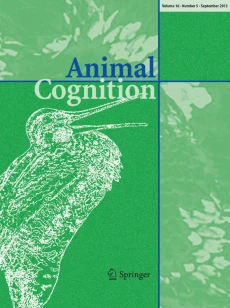
"Grey Parrot Numerical Competence: A Review"
Irene M. Pepperberg
The extent to which humans and non-humans share numerical competency is a matter of debate. Animals that have, however, received some training in human communication systems might demonstrate abilities intermediate between those of untrained non-humans and humans. Pepperberg reviews data for a Grey parrot (Psittacus erithacus) that has been shown to quantify sets of up to and including six items (including heterogeneous subsets) using vocal English labels, to comprehend these labels fully, and to have a zero-like concept. Recent research demonstrates that he can also sum small quantities. His success shows that he understands number symbols as abstract representations of real-world collections, and that his sense of number compares favorably to that of chimpanzees and young human children.
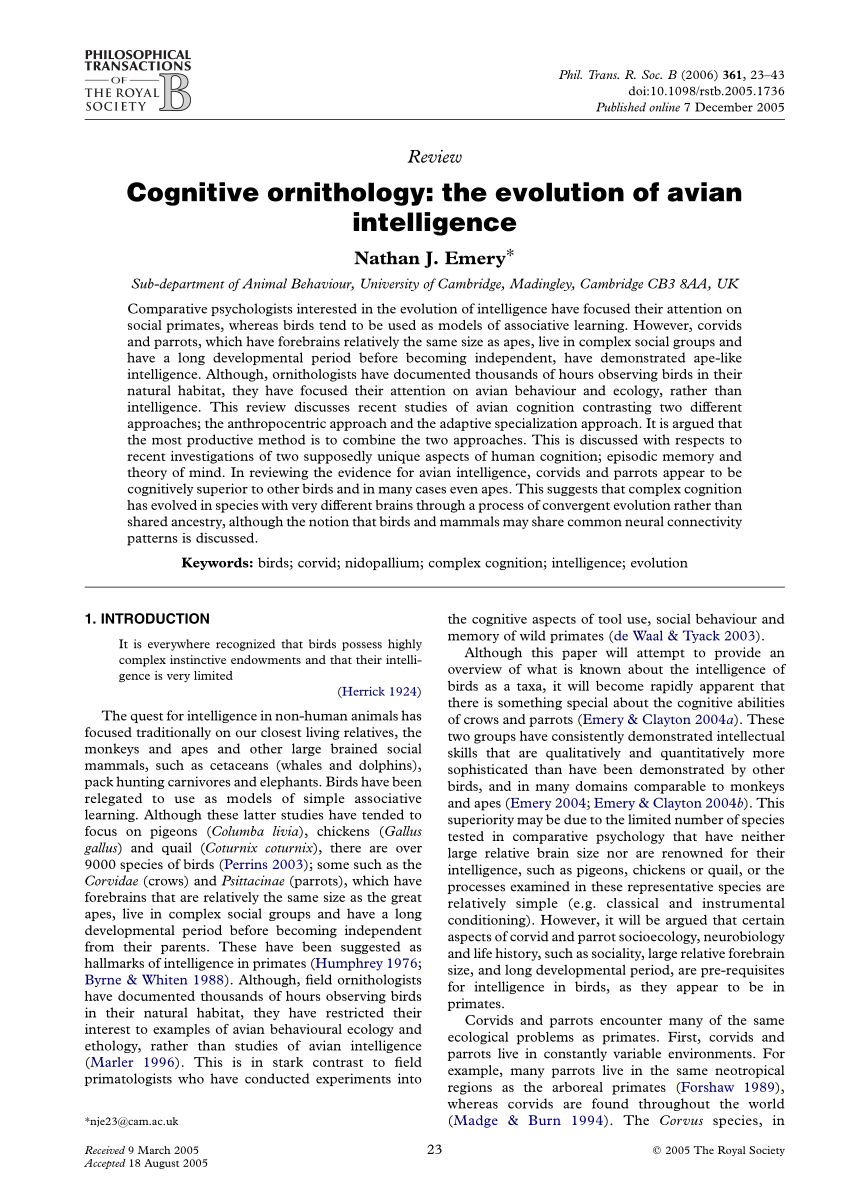
"Cognitive Ornithology: The Evolution of Avian Intelligence"
Nathan J. Emery
Comparative psychologists interested in the evolution of intelligence have focused their attention on social primates, whereas birds tend to be used as models of associative learning. However, corvids and parrots, which have forebrains relatively the same size as apes, live in complex social groups and have a long developmental period before becoming independent, have demonstrated ape-like intelligence. Although ornithologists have documented thousands of hours observing birds in their natural habitat, they have focused their attention on avian behaviour and ecology, rather than intelligence. This review discusses recent studies of avian cognition contrasting two different approaches; the anthropocentric approach and the adaptive specialization approach. It is argued that the most productive method is to combine the two approaches. This is discussed with respect to recent investigations of two supposedly unique aspects of human cognition; episodic memory and theory of mind. In reviewing the evidence for avian intelligence, corvids and parrots appear to be cognitively superior to other birds and in many cases even apes. This suggests that complex cognition has evolved in species with very different brains through a process of convergent evolution rather than shared ancestry, although the notion that birds and mammals may share common neural connectivity patterns is discussed.
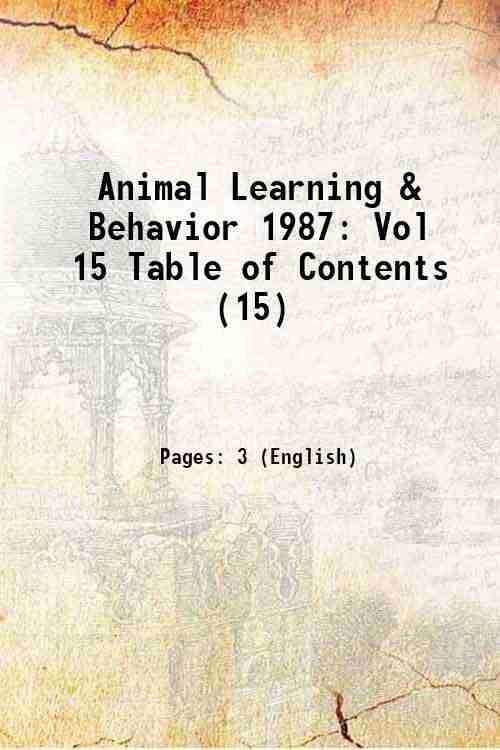
"Acquisition of the Same/Different Concept by an African Grey Parrot (Psittacus erithacus): Learning with Respect to Categories of Color, Shape, and Material"
Irene M. Pepperberg
This is a seminal article in Pepperberg’s research on Grey parrots. “An African Grey parrot, previously taught to use vocal English labels to discriminate more than 80 different objects and to respond to questions concerning categorical concepts of color and shape, was trained and tested on relational concepts of same and different. The subject, Alex, replied with the correct English categorical label (“color,” “shape,” or “mah-mah” [matter]) when asked “What’s same?” or “What’s different?” about pairs of objects that varied with respect to any combination of attributes. His accuracy was 69.7%–76.6% for pairs of familiar objects not used in training and 82.3%–85% for pairs involving objects whose combinations of colors, shapes, and materials were unfamiliar. Additional trials demonstrated that his responses were based upon the question being posed as well as the attributes of the objects. These findings are discussed in terms of his comprehension of the categories of color, shape, and material and as evidence of his competence in an exceptional (non-species-specific) communication code.”
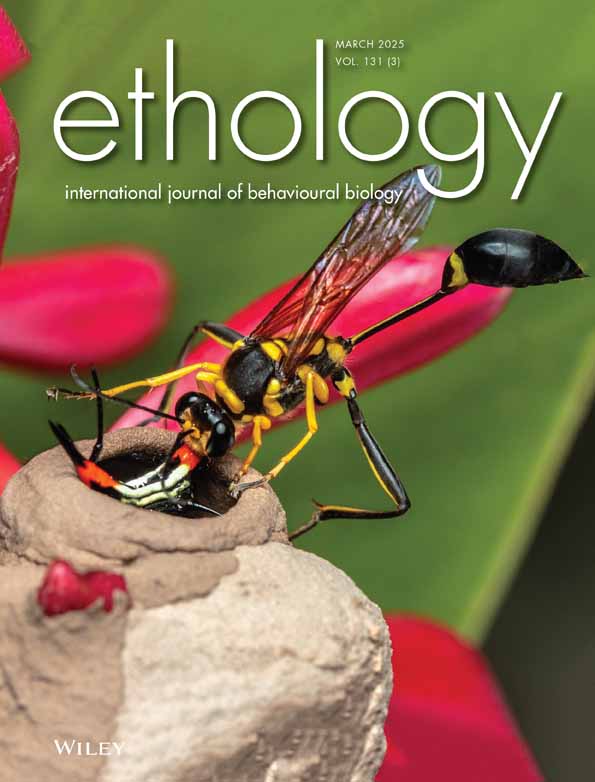
"Functional Vocalizations by an African Grey Parrot (Psittacus erithacus)"
Irene M. Pepperberg
This is a seminal article in Pepperberg’s research on Grey parrots. An African grey parrot, after 26 months of speech training, has acquired a verbal vocabulary consisting of three color adjectives, two phrases for describing shape, 9 nouns, and functional use of the word “no.” The parrot is capable of correctly combining these vocalizations so as to identify proficiently, request, and/or refuse more than 30 objects by means of verbal labels.
Photo Credit: Passerine bird; ignartonosbg/Pixabay